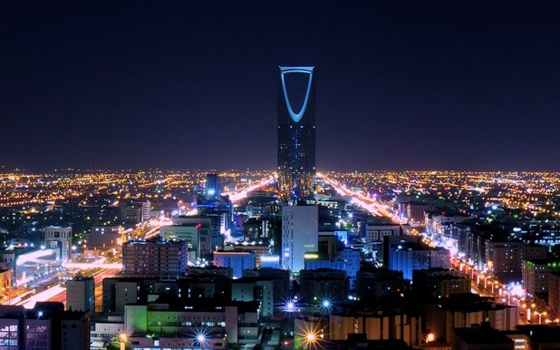Saudi Arabia approved its National Transformation Program, a key part of a blueprint to prepare the kingdom for the post-oil era. The plan outlines a number of initiatives to be undertaken by different ministries. Here is what we know so far:
Public Finances
• Non-oil revenue is seen rising to 530 billion riyals ($141 billion) by 2020 from 163.5 billion riyals. Public-sector wages and salaries would fall to 456 billion riyals from 480 billion, and make up 40 percent of total spending versus 45 percent.
• Public debt will increase to 30 percent of economic output from 7.7 percent, while the kingdom’s credit rating is seen rising two levels to Aa2 from A1.
• Water and electricity subsidies are to be cut by 200 billion riyals; the tariffs charged on water would cover 100 percent of actual costs, versus 30 percent now.
• Percentage of new jobs in the civil service to drop to 1 percent from 5 percent.
• Taxes would be imposed on "harmful products."
• The plan sets aside costs for the “preparation and implementation” of income tax on residents as well as “the unified income tax.” Even so, Mohammed Al-Sheikh, a cabinet minister, said there were no current plans to tax foreigners and referred further questions to the Finance Ministry. He also reiterated the government’s pledge not to impose taxes on Saudi nationals.
• The private sector would fund about 40 percent of the initiatives included in the plan.
Investments, Jobs, Privatization & Exports
• 450,000 jobs to be created by 2020 under the program.
• Non-oil exports would climb to 330 billion riyals from 185 billion riyals by 2020. Foreign direct investment would rise to 70 billion riyals from 30 billion riyals.
• Plan budgets 300 million riyals over 5 years to create “center of excellence” to support the privatization of state-owned companies. The minister of environment, water and agriculture said the government plans to privatize the Saline Water Conversion Corp.
• Proportion of public and private sector expenditure on local content to increase to 50 percent from 36 percent, to be undertaken by the ministry of energy.
• Real estate contribution to economic output to double to 10 percent, with 7 percent annual growth.
• Information technology proportion of non-oil GDP to double to 2.24 percent; media industry to contribute 6.64 billion riyals to economic output from 5.2 billion riyals.
• Proportion of non-oil GDP coming from pharmaceutical industry to rise to 1.97 percent from 0.98 percent.
Business Environment, Women
• Plan to improve Saudi Arabia’s global ranking in terms of ease of doing business to No. 20 from No. 82.
• Average resolution time for commercial cases to be reduced to 395 days from 575 days.
• Kingdom to rank 50th on World Bank’s Contract Enforcement Indicator, from 85th currently.
• 80 percent of Justice Ministry’s services to be delivered electronically.
• Female participation in the workforce to increase to 28 percent from 23 percent; number of women in civil service to rise to 42 percent from 39.8 percent.
• All land holdings to be surveyed, compared with only 6 percent currently.
• Reduce average time required to approve new residential projects to 60 days from 730 days.
Energy, Mining
• Oil output capacity is expected to stay at 12.5 million barrels per day by 2020, with refining capacity rising to 3.3 million barrels per day from 2.9 million.
• Output capacity of dry gas to reach 17.8 billion cubic feet per day versus 12 billion currently. The country will generate 4 percent of its power from renewable energy by 2020.
• Mining sector’s contribution to economic output to reach 97 billion riyals from 64 billion riyals.
Health Care
• Plan for reforming and "restructuring of primary health care" estimated to cost 4.7 billion riyals.
• Private sector contribution to health care spending to increase to 35 percent from 25 percent.
• 70 percent of Saudi citizens to have a unified digital medical record.
Bloomberg
7 June






















































